
作者: Leila Tan|更新:2024年4月24日
Loss of hair is a widespread problem that affects people of all ages, genders, and ethnicities. Male pattern baldness, one of the primary causes of hair loss, is actually a frequent problem in Singapore, affecting almost one-half of men by age 50. This condition is characterised by a receding hairline and crown thinning. Several reasons, including genetics, hormonal changes, medical disorders, environmental variables, and lifestyle choices, can lead to hair loss. Knowing the causes and symptoms of hair loss is essential for choosing the appropriate treatment and coping with the emotional impact it can have on an individual.
1
Major Causes of Hair Loss
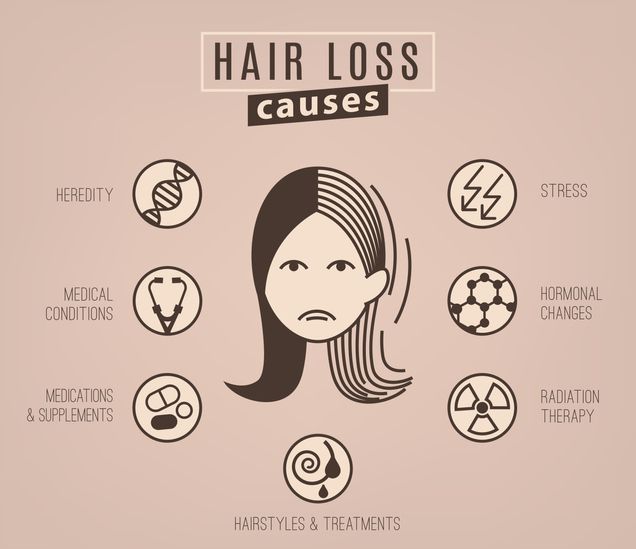
While some hair loss is to be expected daily, if it becomes excessive it may indicate a health problem. The first step in diagnosing and treating hair loss is learning what triggers it.
1.Hereditary hair loss
Androgenetic alopecia is a type of hereditary hair loss that is largely caused by genes. This genetic disorder happens when the body reacts too much to androgens. This condition affects up to 50% of men and women and is marked by the gradual loss of terminal hair on the scalp. It can happen at any time after puberty.
2.Hormonal alterations
Changes in hormone levels can result in temporary or permanent hair loss, such as during pregnancy, menopause, or thyroid conditions. Androgens, which are male hormones, can contribute to hair loss in both men and women.
3.Nutritional deficiencies
Hair loss can be caused by nutritional inadequacies such as iron shortage or insufficient protein consumption. To keep your hair healthy, you must have a balanced diet.
4.Medication influence or radiation
Some medical problems, including alopecia areata and scalp infections, can result in hair loss. In addition to treatments for cancer, autoimmune diseases, and other conditions, hair loss can be caused by chemotherapy.
5.Tension and stress
Alopecia can be caused by extreme stress or physical damage, such as surgery or a serious illness. In these instances, hair typically grows back once the stress has subsided. Yet, continuous stress might contribute to permanent hair loss in certain individuals.
6.Hairstyle and other environmental factors
Pollutants, chemicals, and ultraviolet radiation can cause hair damage and hair loss. Moreover, excessive styling and the use of harsh hair products can cause hair damage and breakage. Keep in mind that as we age, our hair development cycle decreases, causing hair to become finer, shorter, and weaker. This results in hair that is thinner and less dense, which can lead to pattern baldness.
7. Lifestyle alternatives
Tobacco use, heavy alcohol intake, and stress can all lead to hair loss. Inactivity can also diminish blood flow to the scalp and lead to hair loss. Furthermore, tight hairstyles that pull at the roots can cause traction alopecia, a condition in which hairs break or fall out owing to repeated pulling.
2
Losing Hair Excessively Everyday? Watch Out The Signs and Symptoms of Hair Loss
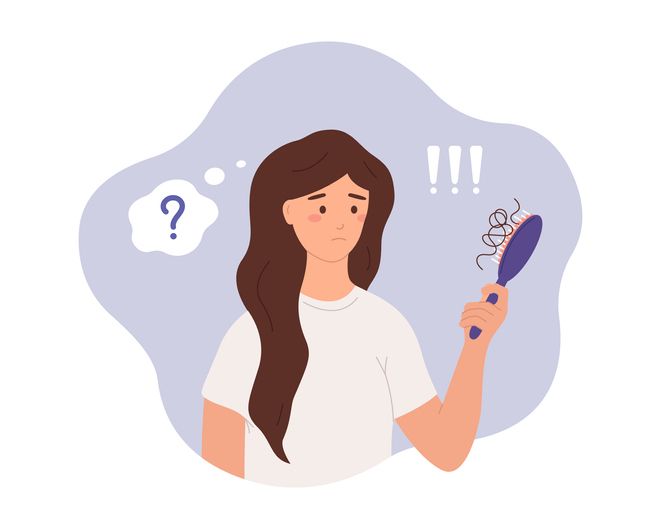
While some thinning of hair on a daily basis is to be expected, excessive thinning might be concerning. When people are aware of the potential risks associated with thinning hair, they are better able to take preventative actions.
Thinning spots
Circular or irregularly shaped bald patches can form in specific locations of the scalp. These may be accompanied with receding hairlines, a typical indicator of male-pattern baldness.
Significant hair loss
Extreme hair loss can develop over time and is a symptom of several kinds of alopecia (hair loss). If you observe an increase in the number of hairs on your brush or in the shower drain, you should be cautious.
Hairline recession
Another common indicator of hair loss is a receding hairline. Generally, it originates near the temples and recedes towards the crown of the head. In time, a receding hairline can spread to other parts of the scalp, resulting in an overall appearance of thinning.
3
Identify Your Hair-nemy When Hair Loss Occurs: Types of Hair Loss You Belong

Many types of hair loss, including androgenetic alopecia, traction alopecia, and scarring alopecia, can result from the aforementioned causes. Before deciding on a remedy, it would be advantageous to be aware of these factors. Fret not, we will keep them simple and understandable for you.
Scalp condition
Common hair and scalp conditions include dandruff, psoriasis. Dandruff is a common scalp disorder characterised by the appearance of flakes of dead skin in the hair and on the scalp. Medicated shampoos containing substances like ketoconazole or coal tar can be used to treat this condition. Chronic psoriasis can cause patches of red, scaly skin on the scalp. It is treatable with topical medicines such corticosteroids and vitamin D analogues.
Alopecia areata
The autoimmune disease alopecia areata results in localised hair thinning or loss on the scalp and elsewhere. It is hypothesised that male pattern baldness is caused by an immune system attacking hair follicles. People who have alopecia areata may experience receding hairlines or receding temples, with the hairline receding further back over time. Additionally, in some cases, this receding hairline can extend to form a bald spot on the crown of the head.
Traction alopecia
Traction alopecia happens when the hair is pulled or pulled on too much. This is often caused by tight braids or ponytails. Over time, hair follicles can get damaged, which can lead to hair loss in patches.
Anagen effluvium
Anagen effluvium is a type of rapid and widespread hair loss that happens when chemotherapy or radiation treatments mess up the hair growth cycle. It also causes hair to thin all over the scalp.
Telogen effluvium
Telogen effluvium is a form of temporary hair loss that happens when the regular hair growth cycle is disrupted. The three phases of normal hair growth are anagen (growth), catagen (transitional), and telogen (resting). In telogen effluvium, a large number of hairs enter the telogen phase early and then fall out, resulting in diffuse hair loss. This can be caused by stress, hormonal changes, drugs, or nutritional deficiencies. In most cases, the condition is transient, and hair growth returns to normal after the underlying problem is treated.
Scarring alopecia
Scarring alopecia is caused by inflammation, which damages the hair follicles and makes the hair loss permanent. This kind of hair loss can be caused by a lot of things, like an infection, an autoimmune disease, or a side effect of a drug. It causes bald spots and permanent hair loss in patches.
Trichotillomania
Trichotillomania is a psychological disorder that makes people pull out their own hair over and over again. People with trichotillomania may lose their hair in patches. Most of the time, therapy and medications are used to help people with this disorder control their urges to pull out their hair.
4
Tips To Rescue Our Receding Hairline & Promote New Hair Growth
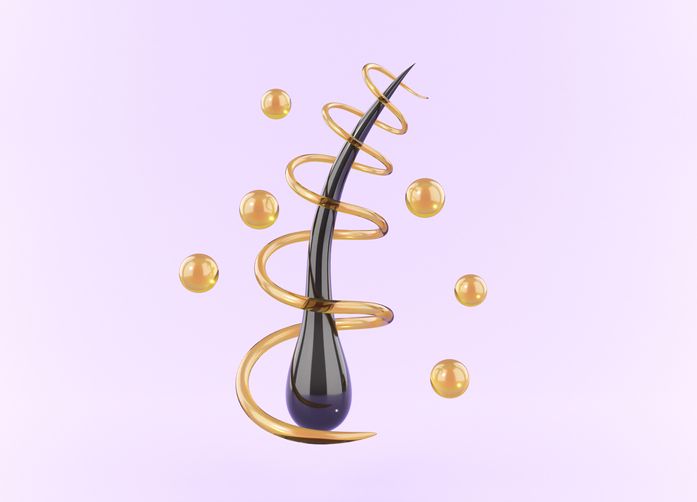
Feeling worried after looking at so many types of hair falls? We understand that hair loss, especially at the hairline, can be upsetting. Confidence and self-esteem can take a serious hit when a person experiences a receding hairline. The good news is that you can prevent further hair loss if you really practise and be persistent about the methods that can treat hair loss.
Natural remedies for hair loss
There are a number of natural therapies that can reverse hairline receding. Using essential oils such as rosemary oil, peppermint oil, and lavender oil is one of the most effective natural treatments. These oils stimulate hair development and increase scalp circulation, thereby preventing additional hair loss.
Aloe vera gel is another natural therapy that can help soothe the scalp and encourage hair development. Including a diet rich in vitamins and minerals can also aid in promoting hair growth and preventing more hair loss.
Medical treatments to promote hair growth
If natural cures for hair loss are ineffective, there are a number of medical therapies available. Minoxidil, a solution administered topically to the scalp to stimulate hair growth, is one of the most widely used therapies. Finasteride, an oral medicine that blocks the hormone responsible for hair loss, is another possibility. Those with significant hair loss may also undergo hair transplant surgery, in which hair follicles are transferred from one area of the scalp to the balding area.
Lifestyle changes to prevent receding hairline
Changing your lifestyle might also prevent additional hair loss. Reducing stress through meditation, yoga, or other relaxation practices can aid in preventing stress-related hair loss. Moreover, avoiding hairstyles that pull on the hair, such as tight braids or ponytails, can benefit in preventing additional hair loss. A good diet and exercise regimen can also aid in promoting overall hair health and preventing hair loss.
5
The Market Is Filled With All Types Of Hair Falls Treatment. How Should I Choose?
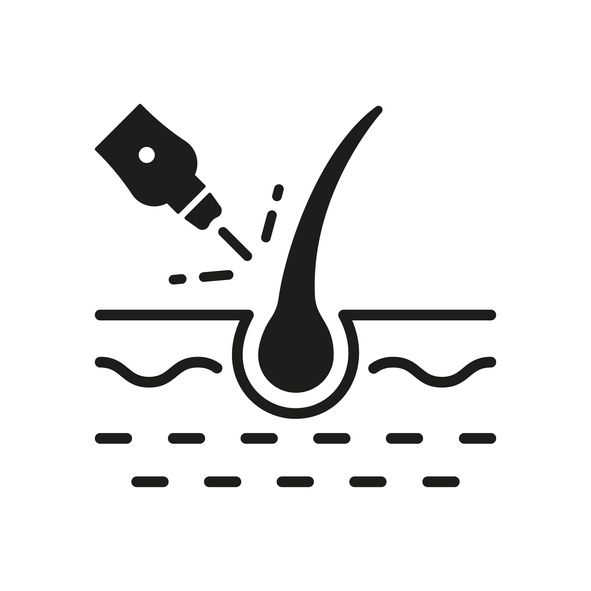
To cure hair loss or hair and scalp disorders, the market offers a plethora of options, including Platelet Rich Plasma, laser treatment, hair implants, and more. Yet, low level laser therapy stands out among others in terms of cost, pain level, and more.
Low-level laser therapy (LLLT) is a noninvasive treatment that has been used to treat hair loss for several decades. Low-level laser therapy (LLLT) includes the use of low-power lasers or light-emitting diodes (LEDs) to stimulate hair growth and create thicker, healthier hair, and here's why:
Truly painless
LLLT is painless and causes no discomfort, which is one of its advantages over alternative therapies for hair loss. There are no negative effects linked with LLLT, unlike other therapies such as hair transplant surgery or drugs.
Quick and convenient
Moreover, LLLT is a reasonably simple and quick therapeutic approach. It normally includes shining light into the scalp for a few minutes every day using a handheld instrument. This can be completed in the comfort of one's own home, making it a practical choice for individuals with hectic schedules.
Tackles different type of hair loss
Both male and female pattern baldness can be effectively treated with LLLT, according to research. It stimulates hair follicles and increases blood flow to the scalp, hence promoting hair growth. Moreover, LLLT can help increase the quality and density of existing hair.
Overall, low-level laser therapy is a safe and effective therapeutic option for patients suffering from hair loss. It is non-invasive, painless, and proven to have minimal adverse effects, making it a popular option for individuals seeking to enhance the health and beauty of their hair.
6
Treat Sudden Hair Loss With The Right Selection: How F8 Hair Regrowth Treatment Can Stop Your Excessive Thinning Hair

Be it female pattern hair loss, male pattern hair loss, patchy hair loss and what not, salvaging the situation when hair loss occurs requires a combination of natural cures, medical treatments, and lifestyle modifications. Understand the source of your hair loss and consult a specialist to discover the most effective treatment. You may restore a receding hairline and stimulate healthy hair growth with perseverance and regular work.
F8 is a noninvasive treatment from Perfect Aesthetics, which promotes hair growth and keeps the scalp healthy. Low-level laser radiation and hair development serum are swept across the scalp to awaken dormant hair follicles and fortify the hair papilla inside. In addition to repairing and promoting the microcirculation of the capillaries, the energy and serum give the hair follicle with nutrients, thereby revitalising them. The therapy will result in enhanced hair growth, reinforced hair strands, and decreased hair loss.
It is also a highly safe hair and scalp treatment for both women and men with hair and scalp issues such as hair loss, hair thinning, oily scalp, sensitive scalp, receding hairline, balding crown, alopecia areata, scalp inflammation, male pattern hair loss, female pattern hair loss, postpartum hair loss, and more.
What to anticipate following the treatment?
Wellness of Hair and Scalp
A low-energy laser penetrates the scalp to stimulate hair papilla and capillary formation, hence promoting blood circulation and nutrient delivery to hair follicles. These characteristics contribute to healthy hair and scalp.
Controls Scalp Sebum
For hydration and sebum management, the therapist distributes hair growth serum to the scalp. Thus, the scalp will feel cleaner and more hydrated, preventing hair and scalp issues.
Services Rendered With Compassion
After the therapy session, the consultants will solicit the client's input regarding the treatment's technique and results. The experts will also advise the customer on proper aftercare and assist them schedule their next appointment.
7
Takeaway
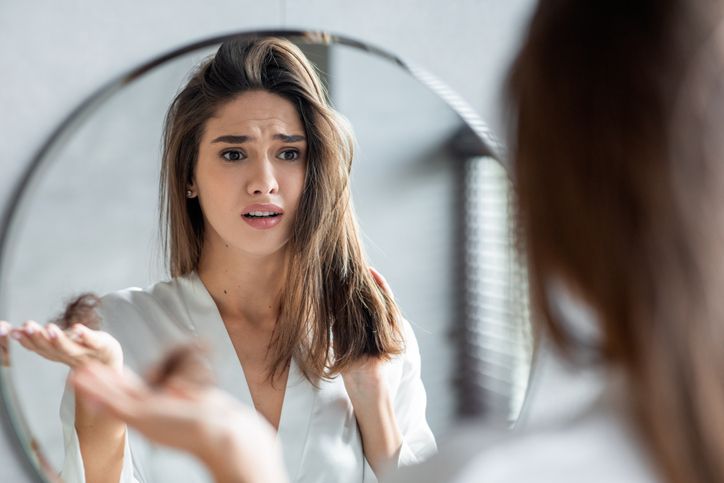
In conclusion, learning about the numerous factors that contribute to hair thinning is crucial to developing an effective strategy for dealing with the issue. There are solutions to the problem of unhealthy hair, regardless of whether it is caused by heredity, hormones, stress, or anything else. If you know what you're doing, you can stop your hair from falling out and even make it grow faster. Don't lose hope; you can get your hair under control and your self-esteem back if you just give it some time and effort!



